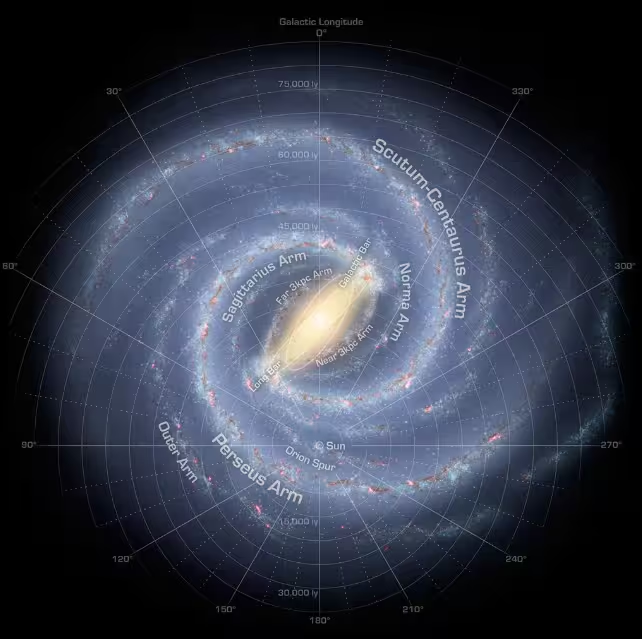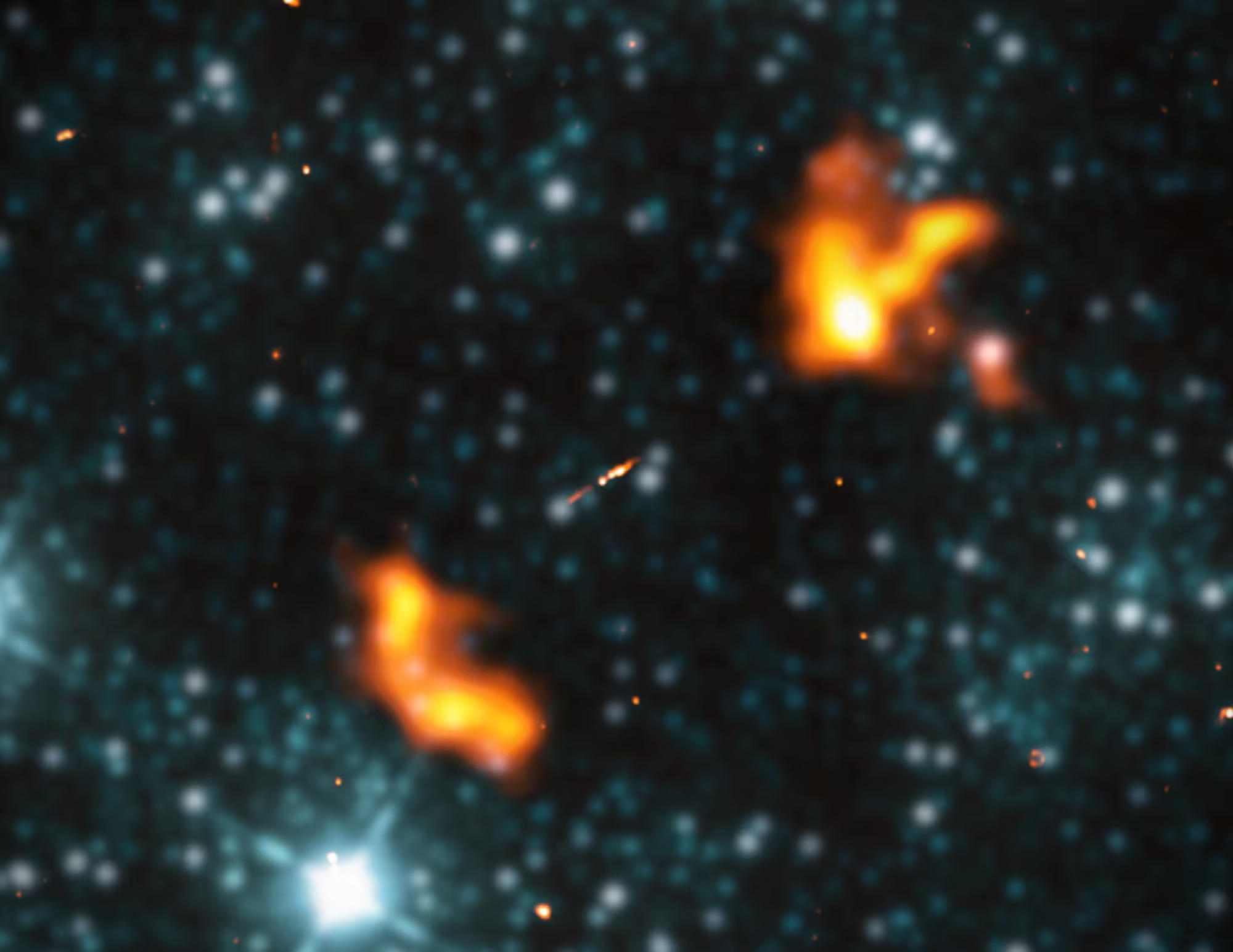6 Minutes
New analysis of distant radio galaxies suggests our Solar System might be racing through space at a speed far greater than current models predict. The unexpected result forces astrophysicists to re-check basic assumptions about the large-scale structure of the Universe and the methods we use to measure cosmic motion.
How a radio census revealed a surprising cosmic speed
Scientists normally estimate the Solar System's motion by combining local measurements — such as the Sun's orbit around the Milky Way — with observations of the cosmic microwave background and distant objects. Recent work led by Lukas Böhme at Bielefeld University takes a different tack: counting radio galaxies across the sky to detect a subtle anisotropy called the cosmic radio dipole.
Radio galaxies emit powerful, long-wavelength radio waves that slice through dust and gas, revealing structures invisible in optical surveys. With deep, wide-area radio data from three radio telescope programs — including the Low-Frequency Array (LOFAR) survey, currently the deepest such map at low frequencies — Böhme and colleagues compiled one of the most sensitive censuses of these objects to date.
The idea is simple in concept but fiendishly delicate in practice. If Earth and the Solar System move relative to a statistically isotropic background of distant radio sources, a tiny excess of sources will appear in the direction of travel and a deficit in the opposite direction. That small bias is the cosmic radio dipole. Measuring it accurately requires careful handling of radio-galaxy morphology, survey completeness, and statistical biases.
The team reports a dipole amplitude 3.7 times larger than predicted by the standard cosmological model, and the result is highly significant — exceeding the conventional five-sigma threshold statisticians use to flag a genuine anomaly rather than random noise.
Methodology: combining telescopes and new statistics
To reach their conclusion, the researchers merged catalogs from three radio surveys and developed a novel statistical method to treat the complex, multi-component appearances of radio galaxies. Many radio galaxies show extended lobes and multiple hotspots that can be counted as separate sources by naive algorithms. Accounting for those components sharpened the dipole measurement.
The LOFAR dataset — notable for its sensitivity to low-frequency emission over large sky areas — played a central role. By cross-referencing LOFAR with other radio maps and applying rigorous component-matching techniques, the team reduced systematic errors that have hampered earlier attempts to measure the cosmic radio dipole.
The result: a direction and amplitude of motion inconsistent with expectations. Put bluntly, the Solar System appears to be moving more than three times faster through the Universe than standard cosmology predicts.

The Sun (center bottom) orbits the Milky Way, which itself is speeding through the Universe.
Why this matters: implications for the cosmological principle
The finding touches a foundational idea in cosmology: the cosmological principle. This principle states that, on large enough scales, the Universe is homogeneous and isotropic — essentially the same in every direction and at every location. If the radio-galaxy distribution is truly uniform, the dipole should match the motion inferred from the cosmic microwave background and local dynamics.
But the observed discrepancy opens two broad possibilities. One is dramatic: our cosmological models miss something important about large-scale structure, and the assumption of large-scale isotropy may require revision. The other is more conservative: radio galaxies themselves might be distributed less uniformly than assumed, perhaps due to clustering, survey selection effects, or unrecognized systematics in one or more radio catalogs.
"Our analysis shows that the Solar System is moving more than three times faster than current models predict," said lead author Lukas Böhme. "This result clearly contradicts expectations based on standard cosmology and forces us to reconsider our previous assumptions."
Co-author Dominik J. Schwarz adds: "Alternatively, the distribution of radio galaxies itself may be less uniform than we have believed. In either case, our current models are being put to the test."
Scientific context and next steps
This result will prompt independent tests. Additional radio surveys — upcoming deep maps from SKA pathfinder projects and expanded LOFAR campaigns — can check whether the anomaly persists across frequencies, survey strategies, and sky regions. Cross-checks with optical and infrared galaxy catalogs may help determine whether the effect is unique to radio selection or reflects a broader cosmic pattern.
If confirmed, a persistent discrepancy would have profound cosmological implications: it could signal unexpected anisotropy on very large scales or reveal previously unknown large-scale flows in the matter distribution. Either outcome would stimulate theoretical work to reconcile observations with the standard model or to propose viable extensions.

Alcyoneus, a giant radio galaxy with lobed structures spanning 16 million light-years.
Expert Insight
"This measurement is an important nudge to the community," says Dr. Maya Chen, an astrophysicist and science communicator. "Either we find a new systematic in radio catalogs, or we uncover physics that challenges our conception of large-scale uniformity. Either way, it's a win for precision cosmology — we learn something new about the Universe."
Follow-up work will likely combine larger radio samples, improved sky modeling, and multiwavelength comparisons. As new datasets arrive, astronomers will determine whether we are indeed moving faster through space — and whether that motion forces a rethink of cosmic homogeneity or points to subtler observational effects.
Source: sciencealert
Comments
astroset
Wait, moving 3.7x faster? Is this even real or some catalogue bias sneaking in... LOFAR is deep but surveys can fool you.


Leave a Comment